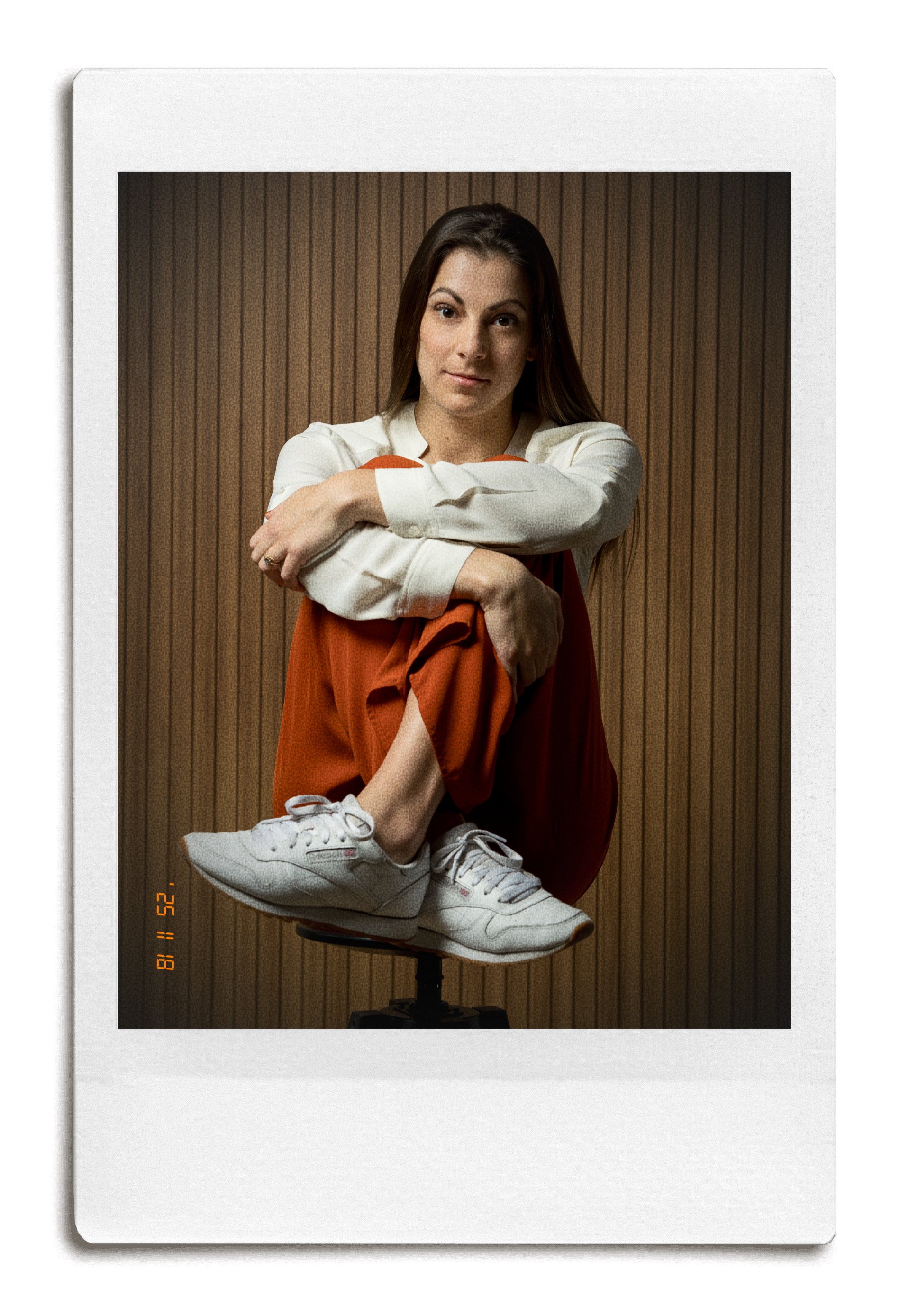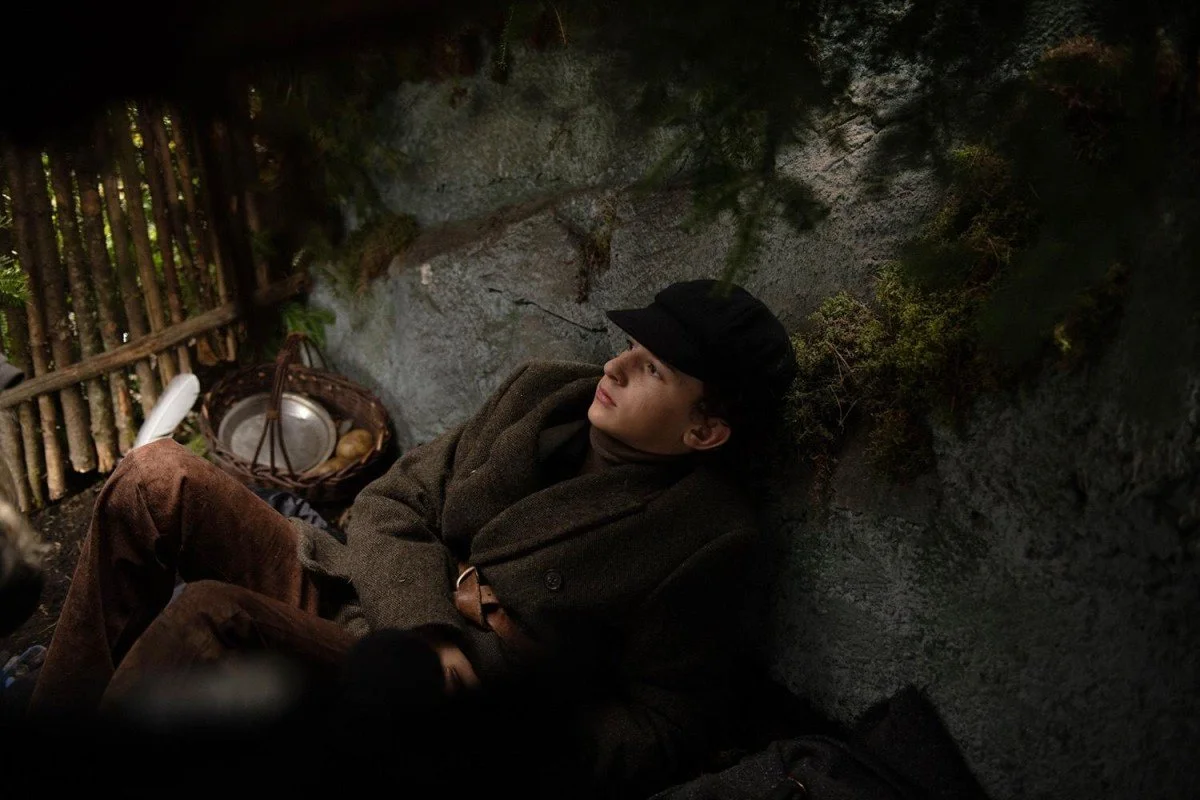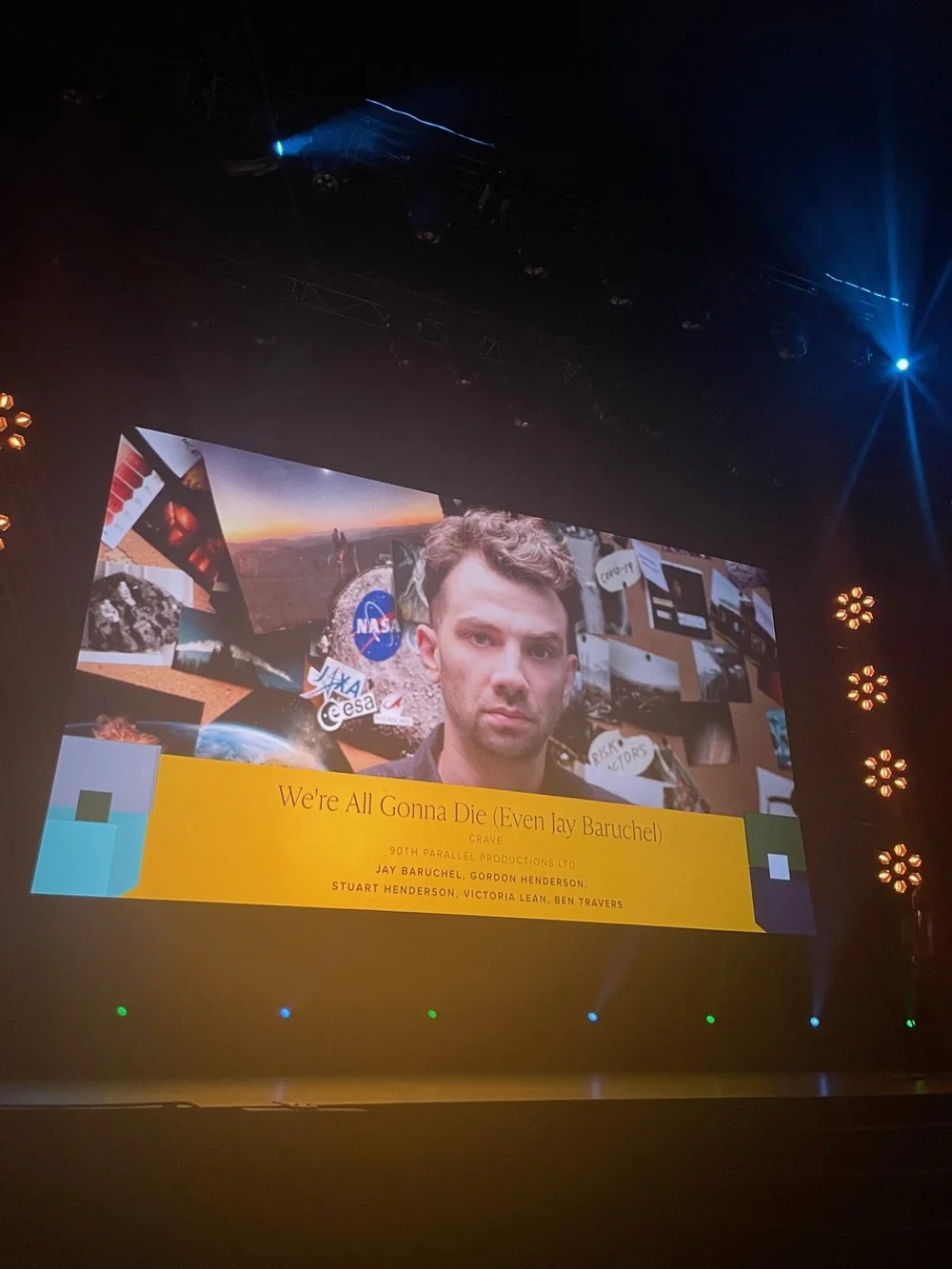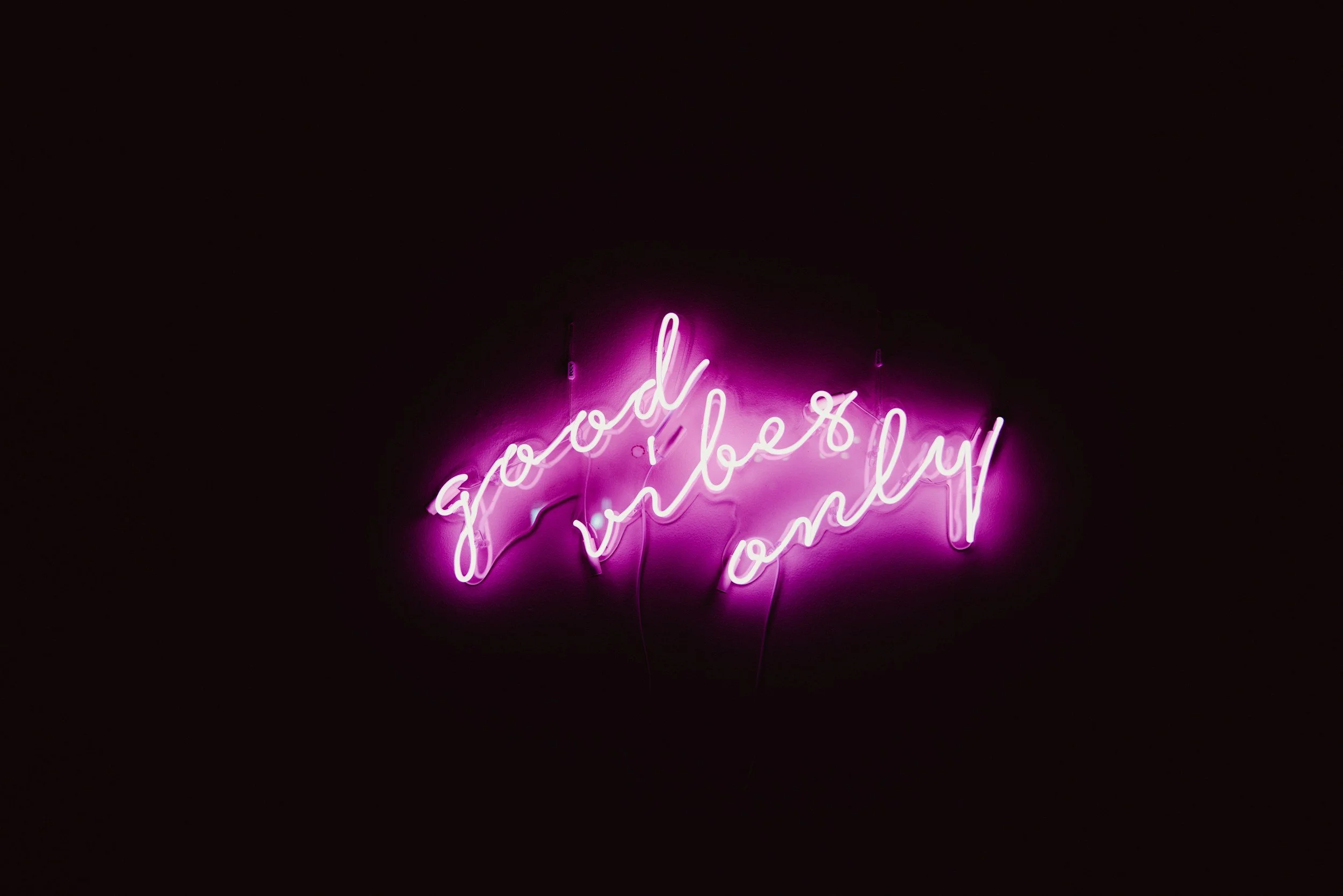Josh (Ben Stiller) plays the truth-seeking filmmaker, fixated on finding meaning by creating context in the editing room. Obsessed with how things are, veruses using material to manipulate meaning, Josh spends ten years on an over-budget, unorganized film about a variety of things, but mostly "America. The film is about America." Josh's journey and struggle centres around his unwillingness to let his wife's father's success seep into his own documentary path. He is what we can call a purest.
Horrifying, Thoughtful & Atmospheric - It Follows Review
The Importance of Memory - Woman in Gol
An elegant and highly emotional film graced theatres last week: Woman in Gold. Starring Helen Mirren (Miriam), Ryan Reynolds, and Daniel Gruhl, Simon Curtis takes us on a sweeping journey of a holocaust victim's life after WWII. It is based off of the true story of Maria Altman's quest to retrieve her aunt's portrait, Adele Bloch-Bauer, from Austria. The film champions justice, for once, and Maria is able to safely bring her family heirlooms back to America and in the hands of what has grown to be her home.
Netflix and Vervegirl TV - Changing Canadian TV Watching Experiences
Youtube web series, TV shows created and released for Netflix consumers, Canadians with the power to choose their own personalized TV bundle kit ... this is the dawn of a new age. Toronto is one of many leaders in quality media creation in Canada. It is important for industry reps. to stay on top of the changing media landscapes. We have to not only process the information but question what the future holds: what do the new CRTC laws do for consumers? How is my TV and movie watching experienced changed with Netflix and Shomi?
Cinderella: Characters or Caricatures
I was enchanted last night at Cineplex with the new 2015 Cinderella. Let's not for a moment take this film too seriously. But Disney had a few tricks up its sleeve that I think are important to take down. Directed by Kenneth Branagh and starring Lily James (plays Cinderella, known for role in Downton Abbey), Richard Madden (plays the prince, known as Rob Stark on GoT), Cate Blanchett (plays the stepmother), and Helena-Bonam Carter (plays fairy godmother).
Juggun Kazim - A Night with Western Alumni
Last night I attended my second Western Alumni event in Toronto at the Rosewater building. First off, let me say how much I have so far enjoyed these evenings. Western U Alumni your hard work and dedication to reaching out to past Western students makes me feel purple and proud all over again. Thank you for providing an extraordinary experience.
Last night, Juggun Kazim gave an emotional inspiring talk about her journey from Pakistan to Canada when she was 17 to attend Western U. She didn't know anyone at the school. She knew it was a good school but that was it.
When talking about her culture she says, "I am Pakistani. I am Muslim. I am Canadian. But first - I am a human being [...] religion has nothing to do with who you are."
This was the basis of her entire talk: the Power of Human Beings.
From a privileged family, Juggun said she never would have ended up with such a successful career in the media without having attended Western U. She strongly believes that Western provided her not only an education but a lesson on being human: "Western teaches you how to be an extraordinary human being."
"The only way the world will respect you is if you respect yourself" - Juggun Kazim
During her time at Western, she enrolled in the Western Work Program to help pay the international fees. She says it was heart warming dealing with all the wonderful people who worked at Western. They laboured endlessly to make sure she could stay in school. All she had to do was give back to the purple community.
After graduating, she entered the media sector in Canada, much to her family's distaste, and flourished as an actress. This was not without its trials. At this point she laughed. Working as a new Canadian actress in Canada, she was either auditioning to play a "desolate" Pakistani woman - to which she said her skin tone was not dark enough for - or she was invited to audition to be a Canadian - which she also laughed and said she was not "Canadian" enough due to her accent. Being stuck in limbo, and feeling slightly spent, her agent suggested to change her name to J. It seemed to work and she landed a role in a film and two stage plays.
She returned home shortly after. She was quickly engaged and married to a man from home. I will leave this part of her story out as she has asked the people who were present last night to keep this part private. But I will say she went through an extremely rough patch in a bad marriage (really bad).
She must have seen the shock and sympathy in our faces. She replied slowly and said (and I paraphrase here) the reason I don't talk about this is because this is something that happens everywhere. It does not define me as a Pakistani woman. "You have to get over it and move on."
From here, she got out. She left and pursued her media career as a Breakfast television host: Mornings with Juggun Kazim.
She remarried. "I don't have to look far outside my home to find inspiration." And she pointed to her husband in the audience, "that man there deals with me in all my crazy and erratic moods."
She ended her tale by saying an amazing array of inspiring words:
"Work from the inside out." - (paraphrased) everyone says to think outside the box. I say become the box and slowly help to reshape the world around you to bring about change.
Her biggest conflict now is changing the perception at home (Pakistan) of being a woman who is both "beautiful" and intelligent." Most people tell her that she can't be on screen and be those two things synonymously. You have to be very careful saying what is on your mind, she told us. She has found that using positive reinforcement is the safest path.
When talking about serious issues such as child molestation, she said she can't come out and just say it point blank. She has to instead guide parents by insisting to care and listen to their children. To watch over both their young girls and boys.
"Send kindness forward, give back" - Juggun Kazim.
Being the ultimate nerd that I am, and having now a massive female crush on Juggun (who is a fellow purple warrior) I asked her to sign my copy of the Western Alumni gazette.
I shared an experience I had and she told me: "whatever you do, do not be silent. Always talk to someone about your experiences and share."
Keep smiling!
- Jenn
A Night with Maureen Jennings
There are always going to be those nights when no matter how blustery the Canadian winter weather is, you are willing to brave it (wind, rain, or snow) to go out and visit an author whose work excites and inspires you. This is how I felt last night travelling to a Toronto Public Library branch to hear / see Maureen Jennings speak about her career.
X Company - Canadian TV and Historical Dramas
I have been just bursting to write this blog since last Monday. I was invited to the premiere screening of X Company at TIFF. It was hosted by the Writers Guild of Canada and they asked us to hold off any media release until the show had featured on CBC February 18th, 2015 at 9:00pm (Toronto time).
Well now I can tell you about the two amazing people who are the brains behind this Canadian operation: Stephanie Morgenstern and Mark Ellis. Both were the creators of Flashpoint, the hit FBI series that ran for four successful seasons. Stephanie and Mark have figured out a way and continue to create top Canadian content without losing the quality of their vision due to budget restraints: a co-production with the US.
Stephanie told us at the premiere that it wasn't as if they presented an idea at its earliest formation - undeveloped and in need of a lot of work. They walked into CBS network with a finished script and Canadian support and said look at what we have, you should be a part of it!
X Company is a historical drama based loosely off of Camp X during WWII. Camp X is North America's first secret services base and is located in Whitby / Oshawa (my ole' stomping ground). Figures such as Roald Dahl, Ian Fleming, and Hamish Pelham Burn entered through these training grounds. Even women served as lethal spies! Most perished at the hands of the Gestapo, but not before they did some serious damage to the Nazi moral.
I say based loosely because Mark Ellis made it quite clear that no real historical people are going to show up in the show. Only events as they happened historically are going to be retold through a group of 5 fictional characters: Aurora (Quebecois and fluent in German), Alfred (someone with perfect memory due to an intense case of synesthesia), Neil (whole family died in the Blitz in England), Harry (Engineer student who likes explosives), and Tom (Ad man, good at propaganda and deception). All with unique gifts and none formerly a part of any army / secret service.
I think my favourite comment that Stephanie and Mark made that evening was that they were proud to be Canadian. Canada is not a "stepping stone to L.A. There is a pool of world class talent that exists at [our] fingertips" - said a passionate Stephanie. This made me so proud to be Canadian at that moment and witness a new CBC show that is sure to be a success.
The pilot is packed with action, adventure, heart pumping thriller moments, romance, and a unique look at different personalities who have to work together. There are twists at every corner and at times when we want to hate the antagonists (Nazis - DUH) Mark and Stephanie humanize them with little comments here and there, "I wanted to go to Med-school but I had to serve in the army first."
Mark and Stephanie closed the evening off with some inspiring words. They said write what interests you. Don't follow market fads because by the time your show comes to fruition, that trend has long since passed. Their idea was an ongoing interest for ten years before it became a reality. This really put my own goals and aspirations into perspective.
To Mark and Stephanie and all the production / post production / distribution / broadcasters involved in X Company, I am "happy to learn to know you" over the next few months.
- Jenn
NEXT WEEK'S BLOG: Other Canadian Co-Productions
"... The hit Canada show, Vikings, is also a co-production: Canada - Take 5 Productions - and Ireland ... This also happened a few years back with another CBC show, Titanic: Blood and Steel. Take 5 Productions and Temple Street are leading the production world in Canadian ..."
Nick Price and Wander Lost
I distinctly remember having a talk about sensuality and art in school. It centered around how we as human beings experience art. Do we see it? Do we touch it? Do we taste it? Do we hear it? How can we define "art as experience" as a code of conduct. Must we always be able to see or is it how we feel. If you are trapped in a lonely dark space and all you have are your thoughts to keep you company, is that art?
Perhaps we can broaden this idea of experience and art to the feeling that resonates in us. Whether immediately after or as it brews and settles over a long period of time after.
I think the most interesting way of experiencing art is hearing it. Music cannot be seen, it cannot be touched. It is a concept. The wavelengths bounding off the wall and through the loudspeakers can only be understood on a scientific spectrum. We do not see, and we do not feel touch. Only bass can resound deeply within us but how do we even begin to describe that?
We do hear. And it is the most intense of all things. Hearing how sounds are mixed together draws us to a different space. Something rooted deep within us.
For me, music evokes visual iconography. I SEE things when I HEAR things. A classical symphony calls to mind a graceful ballet. A thumping bass hit makes me feel energized and ready to dance. A peaceful melody has me at a cottage or meditating in yoga class.
On Tuesday February 17, 2015, Nick Price released his EP album Wander Lost. He hosted the event at a cool venue in Toronto that was once a place of worship for buddhists. While I was hearing the sweetly tuned melody of the electro keyboard, the thick and heavy electric guitar and Nick's vast array of vocal octaves, I was taken elsewhere, outside the room. The songs made me escape in those moment and enter into others.
When I heard "Cabin Built for Two" I found myself first in an empty loft apartment in the great city of Toronto. I saw a couple, young and vibrant, looking at the space hungrily, soaking in every detail, dust particle, and crease that their home had to offer. I saw them rip open a box and string a king-sized white sheet across rope. They threw in pillows and blankets and a flashlight. As the light outside faded, their tree-fort haven lit up brilliantly. They built a space for two.
I was violently taken away from the safety of this image and thrust into the great outdoors, surrounded by intense forest noises and perhaps the rushings of a close by brook. A small log cabin stood amidst nature's encroaching branches. Two people lay outside by a dim camp fire, in sleeping bags and gazing at the stars. Their eyes shining brightly with reflections of constellations.
It was like this all night: mesmerizing and purely hypnotizing. I was taken on a guided journey. I let myself relax into the sounds and my imagination took over. All sense of time and reality stood fleetingly aside.
As Shakespeare wisely put it, "if music be the food of love, then play on. Give me excess of it" - (Twelfth Night). Music inspires those who listen.
Thank you for sharing with us your beautiful talents Nick. If you haven't heard any of these songs you are severely missing out. Just click and enjoy...
- Jenn
Selma in Review before the Oscars
I am really excited to share this blog with everyone. I was fortunate to have guest blogger, Alessia Iani (Ba, and MA graduate), contribute this week right before the oscars. She watched Selma in theatres and has written a very in depth analysis below. It sent chills up my spine.
Let's Talk Social Media: #FNLROM
How are companies today using social media as free advertising? And what is the most effective way of engaging with your audience?
In November, 2014, my friends and I went to the ROM on a Friday night to experience Friday Night at the Rom (#FNLROM). We were greeted with a DJ, dance floor, food from different cultures, bars in every nook and cranny in the museum waiting to dispense wine and mixed cocktails, and all the discoveries and facts the ROM has to offer.
It was a brilliant way to get together and enjoy a combination of interactive learning with a fun night out.
This past week, I attended their themed night: Carnival. It was awe inspiring! Everywhere we went we heard live music, we saw a fashion show, and enjoyed watching the models dance on stage to Soca music.
I think what made the night even better is the massive screen they have in the main area that showcases Instagram photos of people at the ROM that night - live feed! It made me want to take photos and be a part of the live action.
I even got a nice comment from the ROM for the photo below.
I find this combination of social media and interactive experience seamless. I never felt like I was a part of a giant advertising scheme because it was fun. It took the action of photo taking, something that exists already with the advent of smartphones, and made it special. Everyone likes to feel important and noticed and in this way, the campaign at the ROM was truly effective.
Besides, who doesn't like dinosaurs and wine and cupcakes?
- Jenn
Widescreen Thriller: A Most Violent Year
Let us continue the tradition of using Ted Hope's five criteria when it comes to cinema: what five things do we want from cinema? This past week, I had the privilege to watch A Most Violent Year (2015), starring Oscar Isaac, Jessica Chastain, David Oyelowo, and many others. Written and Directed by J. C. Chandor.
An Age of Web Series
A year ago, I discovered The Lizzie Bennet Diaries. After several intense weeks of constant youtube watching, the show was suddenly over and I wanted more. I researched and came across the real production company behind this web series: Pemberly Digital. Okay so maybe I was attracted initially to the Pride and Prejudice reference, but upon further inquiry, I realized that this was a special production house that modernized nineteenth century literary classics into modern and accessible stories.
What do WE want from cinema: Inherent Vice
I had a really unique movie going experience last week. At 9:20pm on a Tuesday night, I trekked alone to Cineplex Odeon Varsity Theatres at 55 Bloor Street, Toronto, for a VIP screening of Inherent Vice (2015). Directed by Paul Thomas Anderson, adapted by Thomas Pynchon's novel, this is by far one of the most interesting films I have got to see this year.
















